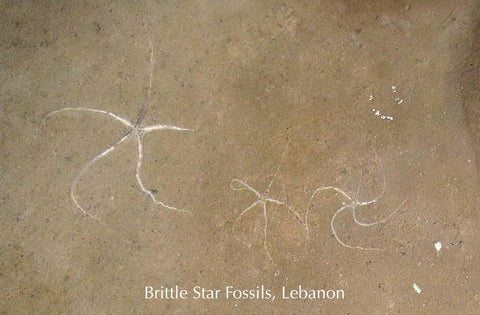Fossils of Lebanon
From Sea to Stone

There are several quarries in Lebanon that warrant the designation of fossil Lagerstatten (top deposits in the world) because of the exquisite quality of preservation and incredible diversity of life forms that are trapped in the ancient rocks. These sites are located near the towns of Hakel, Hajoula and Namoura.
Over 70 different species of fish (everything from flying fish to sharks) along with a wide variety of marine creatures from echinoderms such as brittlestars, crustaceans including mantid shrimp and lobsters and even plants make these quarries comparable to Solnhofen in Germany.

The Lebanese fossils date back to the Cenomanian Stage of the Middle Cretaceous about 95 million years ago. The fossils are preserved in a very fined grained laminated limestone (micritic) – formed by the recrystallization of lime mud.
It is believed that the fossils in Lebanon were formed by a rapid filling of an ocean basin by sediments from the continental shelf. Tectonic activity – either from volcanoes or rapid shifting of tectonic plates may have caused this sudden underwater landslide – quickly submerging and killing everything it its path. An environment that was anoxic lacking oxygen led to the preservation of soft bodied creatures that are rarely preserved including the cartilaginous sharks that even show the outlines of their skin.

